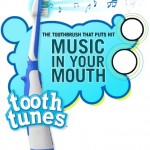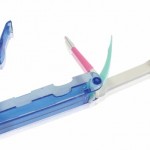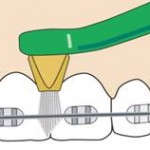A toothbrush is a tool that is used to clean the teeth and to maintain our oral hygiene. Tooth brushing is one of the ways to control plaque level in our mouth , which is mechanically. It can also be done chemically, but mechanical cleaning is the most commonly practiced method around the world. It is also the most fundamental way of removing all the debris in our mouth, in which cannot be done by just using the chemical cleaning method alone.
Every time when we brush, the adherent force between the debris and the tooth surface will be disrupted. This causes the debris to be dislodged from the tooth surface, and be washed away when we rinse our mouth after brushing. Other than debris, all the plaque that are accumulated at the tooth surface will also be disrupted and cleared away. By taking good care of our teeth’s cleanliness, we are also taking care of our gum’s health, as they are inter-related. Healthy gums, in turn, will prevent bad breath, loose teeth, and bleeding gums.
What are the components of a toothbrush?
A toothbrush can be divided into the handle, which is the part where the person hold onto the toothbrush, and also the head, which contains the bristles. Nowadays, toothbrush comes in many colours, forms, and sizes to suit the needs and fancy of the users. For example, a child will prefer a brightly coloured toothbrush with cartoon figures imprinted on the handle, while an adult will prefer a more practical toothbrush. In some children’s toothbrush, a tune will be played for two minutes as an indicator for the child to know how long he/she has to remain brushing.
The bristles of the toothbrush can come as extra soft, soft, medium and hard. For a normal patient, medium or soft bristles will be more ideal as they will not hurt the gums during brushing, but can still remove debris at the same time. However, patients who had just undergo oral surgery will need bristles which are soft or extra soft.
The head of the toothbrush should ideally be as small as possible, so that it can reach to the back of the mouth because the space there is small. The teeth at the back of the mouth is more prone to calculus formation because of the presence of the opening of the salivary glands nearby. The contents of the saliva will promote faster formation of calculus, and if that area is not brushed diligently, chronic presence of calculus will lead to gum recession and other periodontal problems.
What types of toothbrush are there?
There are two main types of toothbrush that are available commercially on the market – manual and electrical toothbrush. Electrical toothbrushes are indicated when a person is having some disability or some difficulty to control his muscles to brush effectively. In a normal individual, it is still best to use a normal toothbrush to prevent the individual from totally relying on the electrical toothbrush to clean the teeth. To clean the teeth effectively in a normal person, a Modified Bass technique is often recommended by the dentist or the oral hygienist. In this technique, the brush is held by the individual at an angle, with the bristles angled upwards, pointing at the gum line. A short, firm vibratory motion is then applied onto the tooth surface by moving the bristles of the brush upwards and downwards.
A common mistake that people use to make is that they tend to brush their teeth horizontally, whether is the front or the back teeth. This actually pushes the debris further into the space between each tooth, which is also known as the interdental space. Even with the correct brushing method, it is sometimes not possible to get the debris out from the interdental spaces and requires the help of a floss. Therefore, if a correct brushing habit is not practiced, it can cause more harm than good to the individual.
Another type of toothbrush is a special type of toothbrush, used by patients who are undergoing orthodontic treatment, or who has underwent periodontal surgery before. It is the single tufted toothbrush, and as the name suggests, instead of a head of bristles, it contains only a tuft of bristles. This is to enable the bristles to go into hard to reach places where the bristles of a normal toothbrush could not reach.
Even though a toothbrush seems like a simple tool, it has been improvised many times in many ways throughout history. This includes the tongue brushing function being incorporated into the toothbrush, as well as the ability of the toothbrush to move its head. However, no matter how many advancements are made on the toothbrush, one must never forget that a good oral health comes from a good and consistent brushing technique.


